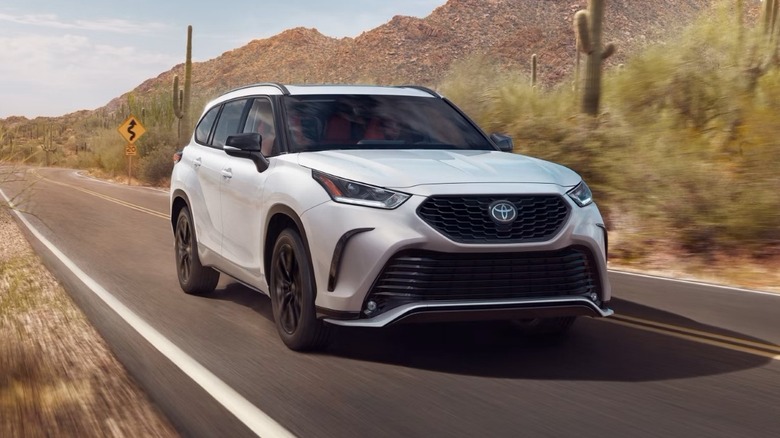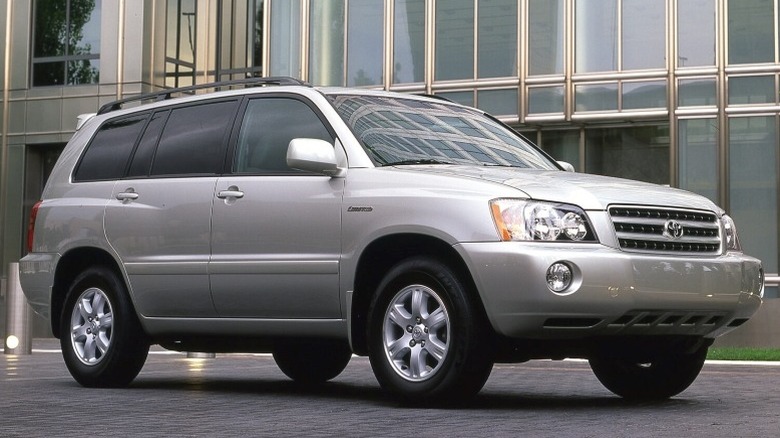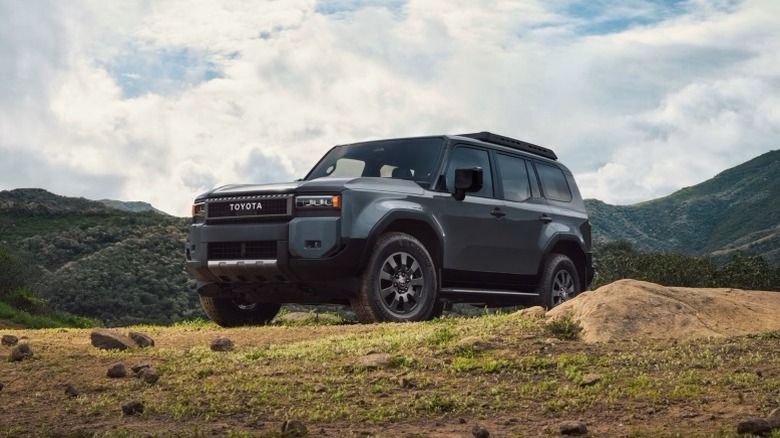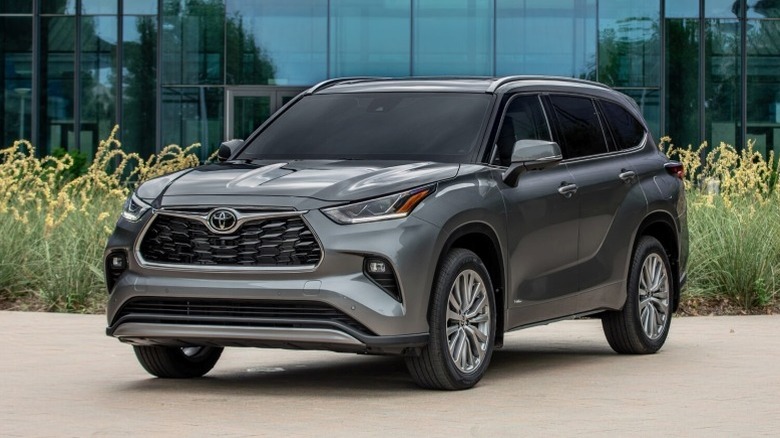Is The Toyota Highlander Built On A Truck Frame?
If you're shopping for a midsize SUV, the Toyota Highlander is almost certainly on your list of options. Factors like Toyota's reputation for reliability, combined with its reasonable price point, loads of standard equipment, relatively cheaper maintenance costs, respectable fuel economy, decent cabin comfort, and good amount of safety features have all worked in the Highlander's favor ever since it debuted in 2000. Clearly, the Highlander's surface-level qualities are evident, but the features underneath the skin, such as what it's built upon, aren't always obvious to all — which might have you wondering whether or not the Toyota Highlander is built on a truck frame.
The short answer is no. The Toyota Highlander is a crossover SUV, and like any crossover, its underlying body architecture and frame are a single unit (a technique that's often referred to as unibody construction). First, second, and third generation Highlanders utilized the Toyota K platform shared with passenger cars like the Toyota Camry and Avalon. With the introduction of the fourth-generation Highlander for 2020, Toyota moved from the older K architecture to the new TNGA: GA-K platform which, again, underpins crossover SUVs and larger vehicles like the Toyota RAV4, Avalon, Crown, Venza, Sienna, Lexus ES, RX, and NX, among others.
What are the advantages of the Toyota Highlander's unibody construction?
One of the biggest benefits to the unibody chassis construction used by the Toyota Highlander is that it is lightweight compared to a regular truck frame. Because this frame type combines the body, floorboards, and structure into a single unit, it tends to be more rigid than a truck frame, and for this reason, serves up smoother handling on the road than a body-on-frame design would. To go with that car-like handling, the lightweight construction of the Toyota Highlander also aids fuel economy, since lighter cars consume less fuel due to the fact that they require less power to accelerate.
The Toyota Highlander's unibody construction also imbues it with a compact design that maximizes available space while also making it easier to navigate crowded city streets than you would with an SUV built on a truck frame. Even when compared to sedans, the Toyota Highlander's unibody construction gives you advantages, such as a higher seating position and a bigger cargo capacity. For instance, while a 2025 Toyota Highlander provides 16 cubic feet of cargo space behind the second row and up to 48.4 cubes with the rear seats folded, a 2025 Toyota Camry gives you just 15.1 cubic feet of trunk space to work with.
Does Toyota currently offer any SUV with a truck frame?
Despite the growing popularity of crossovers, truck-based SUVs are still alive and well within Toyota's current lineup. Contemporary versions of the Toyota 4Runner, Land Cruiser, Sequoia, and Land Cruiser Prado are all built on Toyota's TNGA-F global truck platform, which also underpins Toyota pickup trucks like the Tacoma and Toyota Tundra. Instead of having a single integrated structure as with the Toyota Highlander, these SUVs all feature a design where the body and frame are two separate units, with the body resting on top of a robust truck frame, hence the term "body-on-frame."
The durable nature of this method of construction makes these SUVs more adept at towing and off-roading, as they can endure hardships better than their unibody counterparts. For instance, while the 2025 Toyota Highlander is rated to tow a maximum of "only" 5,000 pounds, the 2025 Toyota 4runner has a 6,000-pound max rating. Body-on-frame SUVs are also cheaper to produce, since multiple models can utilize the same chassis and frame design, unlike unibody construction where the unit is usually specific to a particular model and can't be used for other vehicles.
How much does a brand-new Toyota Highlander cost?
Base pricing for the 2025 Toyota Highlander starts at $39,520 (msrp) for the entry-level LE trim and tops out at $53,675 for the range-topping Hybrid Platinum. Non-hybrid Highlander models all feature a 2.4-liter turbo-four engine good for 265 hp and 310 lb-ft of torque, with that output making its way to the wheels via an eight-speed automatic transmission. In addition to these features, the base LE grade offers 18-inch alloy wheels, LED headlights, power driver's seat, tri-zone automatic climate control, a power liftgate, an 8-inch touchscreen infotainment system, 7-inch LCD driver information display, wireless Apple CarPlay and Android Auto connectivity, a Wi-Fi hotspot, and more.
The Highlander becomes even more loaded as you move up through the trim levels to the top-spec Platinum grade, where you get everything from standard all-wheel drive to 20-inch alloy wheels, heated and cooled front seats, heated second row seats, leather upholstery, a heated steering wheel, a larger 12-inch touchscreen, and 10-inch head-up display, as well as a panoramic glass roof with sunshade, a power front tilt and slide moonroof. As for the hybrid models, the engine is a 2.5-liter four-cylinder that combines with three electric motors to generate 243 total horsepower. All hybrid Highlander models come standard with all-wheel drive and a continuously variable automatic transmission (CVT).



